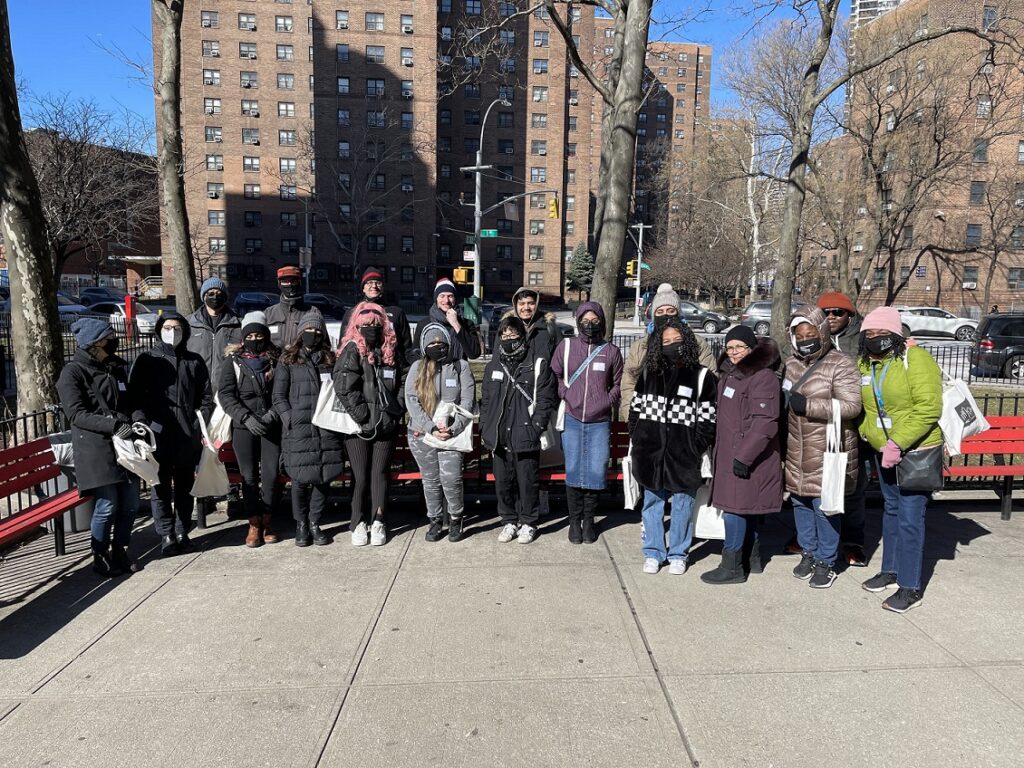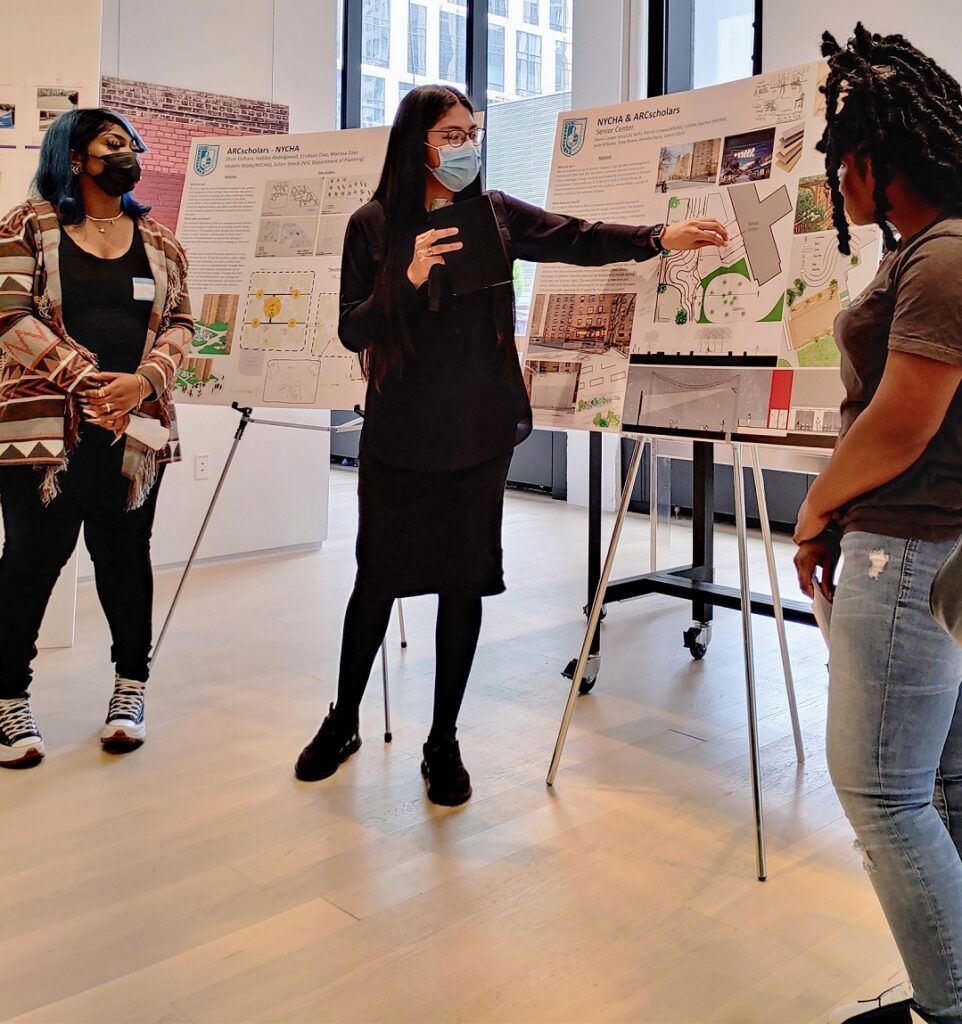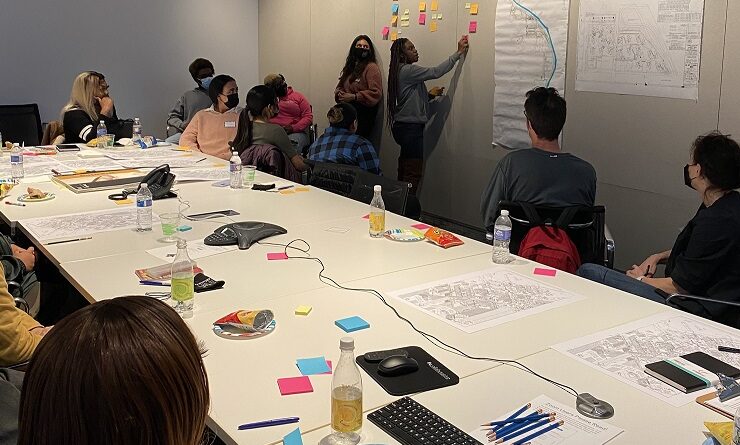Residents Work with Professional Architect Mentors on Design Ideas for Wagner Houses
When studying the urban landscape of his development, Wagner Houses, Erickson Diaz made sure to consider the needs of his fellow residents and how they use the spaces across the campus.
It was a tip that the aspiring architect picked up from professional urban designers who served as mentors for the spring class of the ARCscholars program.
“What I really drew from them was to honestly be thinking about the individuals and people who live in the community and the spaces that they’re going to be using,” Mr. Diaz explained.
ARCscholars is a free program that pairs young NYCHA residents with architecture students from CUNY’s New York City College of Technology (City Tech) to research outdoor spaces at NYCHA developments and propose design ideas to enhance the built environment. The virtual youth leadership program is funded by the Fund for Public Housing and also included site visits where participants met with resident leaders.
For the spring cohort, which concluded with student presentations in May, the ARCscholars focused on East Harlem’s Wagner Houses as the class case study, proposing specific planning interventions to enhance the overall quality and design of the site.
In a new feature of the design program, professional architects were called upon to act as mentors for the students by providing additional guidance throughout the course and increasing their exposure to other aspects of the profession.
“One of the big goals with this program was to introduce professional opportunities to our NYCHA young adults in the field of architecture,” said architect Naomi Langer-Voss, ARCscholars founder and instructor. “I think it was really important for the students to have the professional mentorship input.”

Mr. Diaz, a two-time ARCscholar participant who will be entering his senior year as a City Tech architecture student this fall, said it was “refreshing” to learn from career architects on ways to improve design concepts. The ARCscholars were divided into three project design groups, each assisted by two mentors.
“Just having those mentors there to help guide you was really nice, and to hear different perspectives from people working in different departments and the NYCHA design team,” he said. “I think it was a great addition for us to understand how we can impact our community, not necessarily just through architecture, but other mediums as well.”
Participating mentor Julien Sneck, a senior urban designer at the NYC Department of City Planning, was pleased to have the opportunity to pass on some of his expertise, saying he encouraged the students to consider how open spaces are used not only on the Wagner campus itself but also in the surrounding area.
“They were very motivated and really shared a passion about the places where they live,” he said of the students’ ideas. “Just to hear from them about their own experience and to have them share their perspectives, it was really eye-opening.”

Mr. Sneck’s group, which included Mr. Diaz, developed a site plan proposal for design interventions such as pathways, a barbecue space, and seating areas that could help shape the community and offer greater connections for seniors and youth.
“We were trying to promote the gathering of both age groups and to have a more holistic circulation of the (Wagner) site, as well as improve and promote the social spaces that are currently there,” Mr. Diaz explained.
In another group, mentor Patrick Conway, an architect in NYCHA’s Design Department, worked with ARCscholars on a proposed redesign of the Wagner Senior Center. A third student proposal focused on a renovation of the development’s youth center.
Mr. Conway said the residents and college students collaborated well to devise some innovative solutions for enhancing the senior center’s exterior areas, including constructing an entry plaza with landscaping.
“It was interesting to see the way the dynamic developed between the City Tech students and the NYCHA residents,” he said. “I think the goal of the program, to empower residents to describe and advocate for what they want, is a really good one.”
Noting that students were also able to embrace different perspectives by working with their mentors, Ms. Langer-Voss hopes to continue with the mentorship opportunity for future ARCscholars cohorts.
“I think this provided many different points of view about professional architectural opportunities,” she said.
Photo caption: Throughout the spring program of ARCscholars, NYCHA residents and City Tech architecture students collaborated on design ideas with the assistance of mentors.







